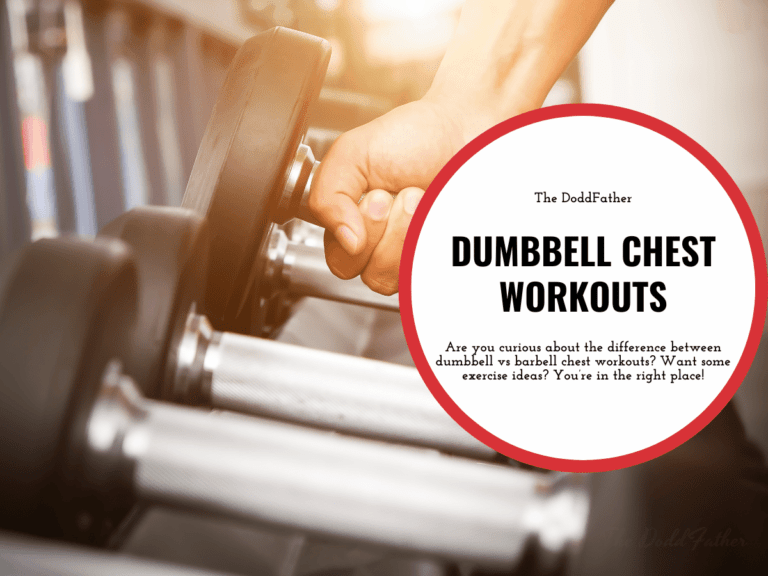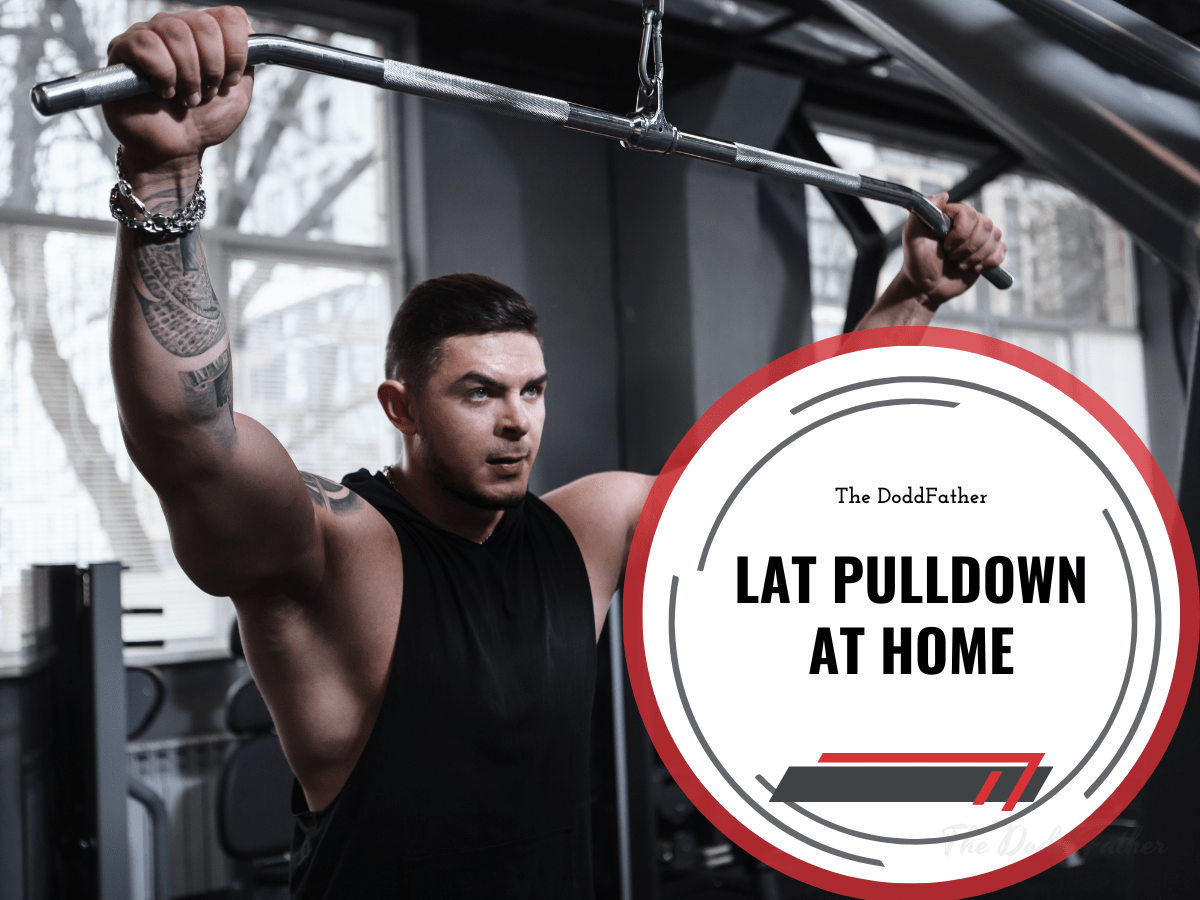
Cody Dodd is a NASM-certified personal trainer and Navy Command Fitness Leader who uses his fitness expertise to write fitness content for The DoddFather. Cody has transformed his physique and confidence by understanding the principles of exercise and fitness.
It all started with a radical fat loss of 55 pounds. From 225 to 170. From a kid who once couldn’t do a pull up, to knocking out 20 pullups in a Navy command competition while floating in the middle of the ocean.
He has a diverse writing and editing background that’s primarily focused on health and fitness, Navy life, and dad life. His work has been featured in Good Dads, as well as Platform Launchers, and Daddying.
Building a good home gym doesn’t have to mean leaving out important exercises like lat pulldowns. The lat pulldown movement is crucial for shaping your back and building strength. Even though it can seem hard to do this exercise at home, there’s no need to worry! We have created a list of nine smart lat pulldown at home variations and techniques. This shows you that you don’t need fancy equipment to get a strong and defined upper back.
Key Highlights
- Unleash your inner strength with these creative lat pulldown alternatives perfect for home.
- No lat pulldown machine? No problem! We’ve got you covered with innovative techniques.
- From resistance bands to everyday objects, elevate your home back workouts with ease.
- Enhance your home gym setup and maximize your results with our expert tips.
- Discover complementary exercises that will help you achieve a balanced and powerful back.
9 Innovative Lat Pulldown At Home Techniques
Are you ready to shape a strong back that impresses everyone? Let’s jump into nine lat pulldown methods you can do at home. These tips will improve your workout routine and help you reach your back goals.
These effective moves focus on your latissimus dorsi and other important back muscles. They will give you the strength and tone you want. Let’s dive into each method so you can turn your home workouts into real sessions for building your back.
Editorial Note: We earn a commission from partner links on The DoddFather. Commissions do not affect our editors’ opinions or evaluations. Learn more about our Editorial Process.
1. Using Resistance Bands Over a Door
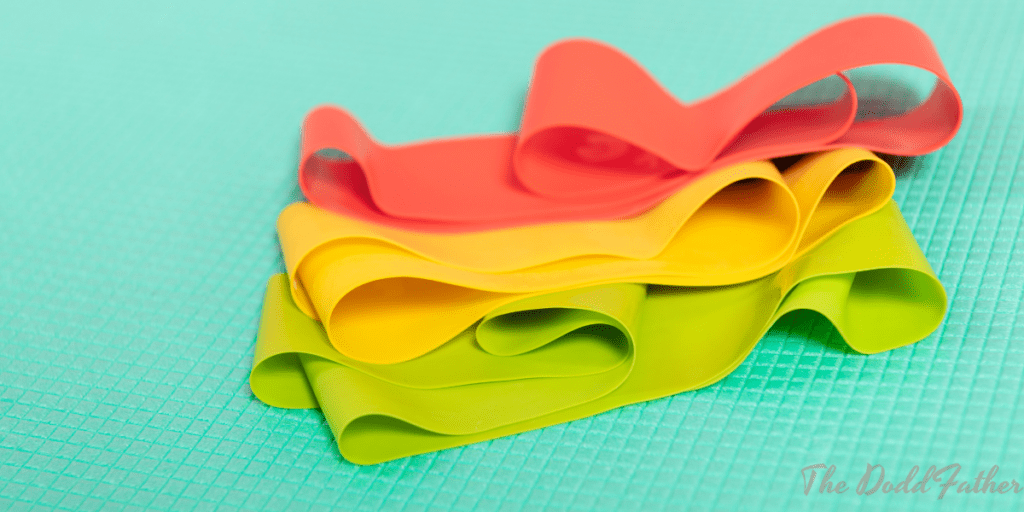
Resistance bands are great tools for any home gym. They provide a good workout for everyone, no matter their fitness level. You can do many lat-targeting exercises just by looping a resistance band over a strong door.
Start by kneeling a short distance from the door. Hold the resistance band handles with an overhand grip. Make sure your hands are wider than your shoulders. Keep your core tight and your back straight. Now, pull the bands down towards your chest. Squeeze your shoulder blades together as you do this.
This controlled movement helps work your latissimus dorsi muscles. It feels a lot like a typical lat pulldown. Resistance bands are special because they can be adjusted. You can change the tension and your body position to work different back muscles. This way, you can have a complete upper body workout right at home.
2. Towel Row Variations
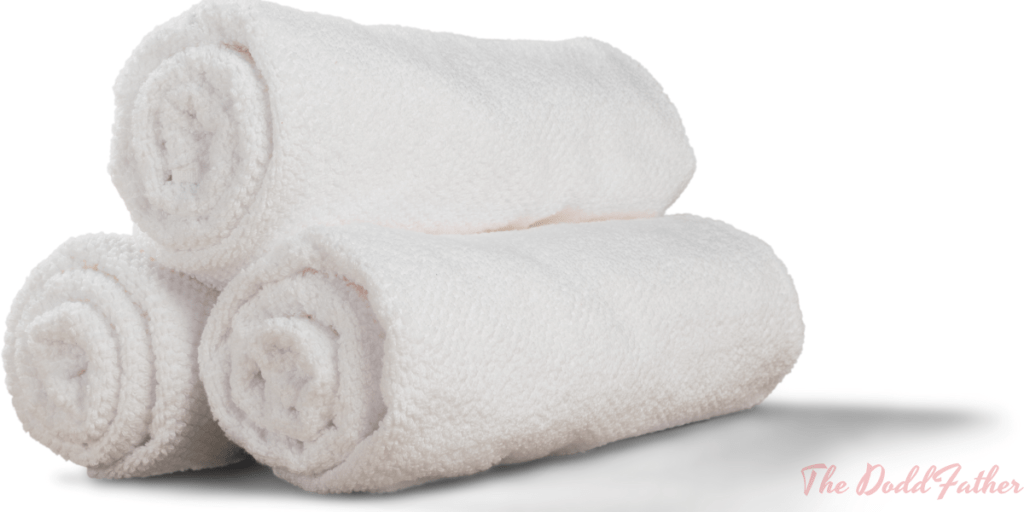
Who would have thought a simple towel could change your back workout at home? Towel rows are a great way to work your back muscles, especially if you don’t have equipment.
Start by finding a solid point to anchor the towel. A low, steady table or a closed door works well. Sit on the floor with your legs straight, or stand at an angle and loop the towel around the anchor point. Make sure it is secure. Hold both ends of the towel with an overhand grip, keeping a slight bend in your elbows.
Now, with your back straight and core tight, pull yourself toward the anchor point. You should feel your back muscles working hard, especially your upper back and lats, as you do this. Towel rows show that you don’t need a gym full of equipment to have a great workout – some creativity can go a long way!
Here are a few ways to make your towel row routine more interesting:
- Vary your grip: Try overhand, underhand, or neutral grips to engage different muscle groups.
- Adjust your incline: Raise your feet on something higher to make it harder for your upper back.
- Add a pause: Hold the position at the end for a second or two to make the workout harder.
3. DIY Pulley System Setup

Unleash your engineering skills with this DIY pulley system. It can take your home lat pulldowns to a new level! With just a few simple things – a strong rope, a smooth pulley, and weight plates – you can create a powerful setup. This setup works as well as the ones in the gym but is cheaper.
Start by securely placing the pulley on a high point like a beam in your basement or garage. Then, connect one end of the rope to the pulley and attach the other end to a weight plate. Next, sit or kneel facing the pulley while gripping the rope with an overhand grip.
As you pull the weight toward your chest, keep your core tight and your back straight. You will feel strong activity in your latissimus dorsi muscles. This exercise mimics the experience of using a traditional lat pulldown machine.
4. Water Jug Rows for Lat Strength
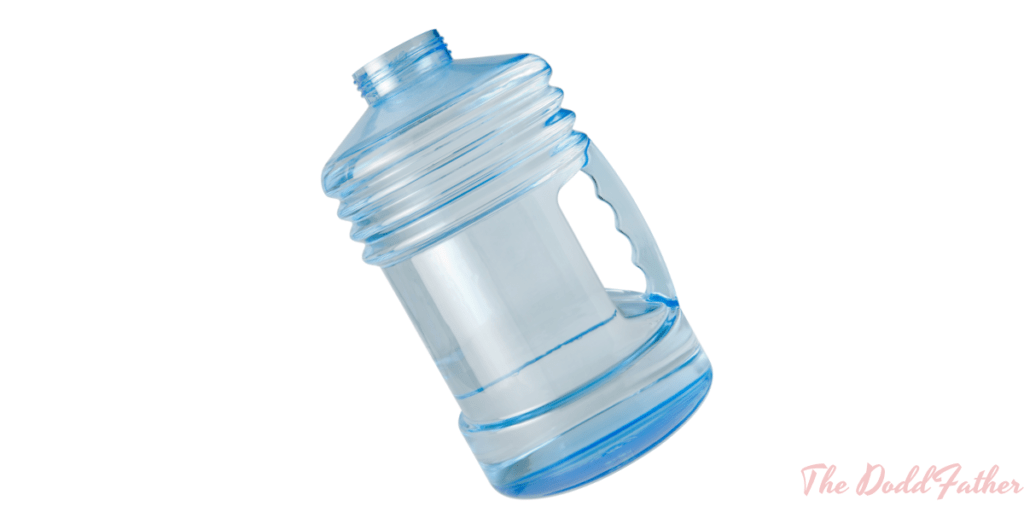
Don’t underestimate everyday objects. Two water jugs can be your new workout partners! Water jug rows are a simple way to build strength in your back, especially if you are just starting or don’t have a lot of equipment.
First, get two water jugs that weigh the same. Pick a weight that is hard but allows you to keep good form. Lean forward from your hips. Keep your back flat and your core tight, letting the jugs hang down.
Next, pull your elbows back and close to your body. Lift the jugs up, squeezing your shoulder blades together. Stop for a moment at the top, and feel your back muscles working. Then, slowly bring the jugs back to the starting position.
5. Inverted Table Rows

Transforming your furniture into workout gear? That is smart thinking! Inverted table rows use the strength of your table to create a great exercise for your back.
To start, slide under a strong table that can hold your weight. Lie down with your chest facing the ceiling, and grab the edges of the table with your hands a little wider than your shoulders. Keep your legs straight out and use your core to keep a straight line from your head to your heels.
Next, pull your chest up toward the table using your upper body strength. Squeeze your shoulder blades together at the top and hold for a moment. You should feel your back muscles working. Then, slowly lower yourself back to the starting position. Inverted table rows are a great way to build a strong back without any equipment.
6. Backpack Filled with Books for Weighted Pulls
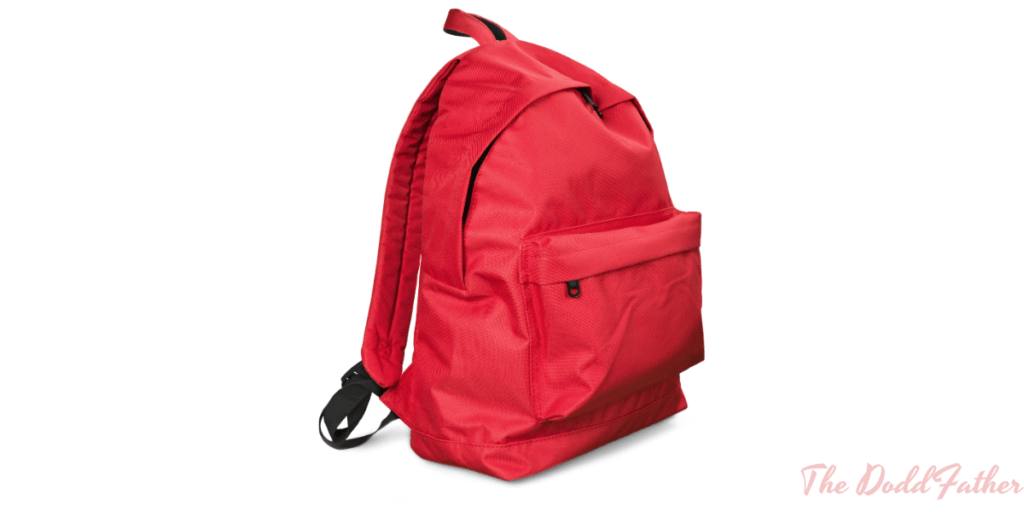
Remember those school days when you carried a heavy backpack? We can turn that memory into a way to build muscle! A backpack full of books is a great and easy tool for exercises like weighted pulls. This shows that staying fit can be simple and convenient.
First, find a strong place to anchor the backpack. You can use a pull-up bar, a tree branch, or the edge of a solid table. Make sure the backpack is secure when you hang it over the anchor point. Then, position yourself either kneeling or standing in front of the backpack. Grip the straps with your hands in an overhand grip. Your hands should be a little wider than your shoulders.
Now, remember to engage your core and keep your back straight. Pull the backpack towards your chest while focusing on using your back muscles. You can change how many books are in the backpack to control the weight. As you get stronger, you can make it harder.
7. Sliding Lat Pulldowns on a Smooth Floor
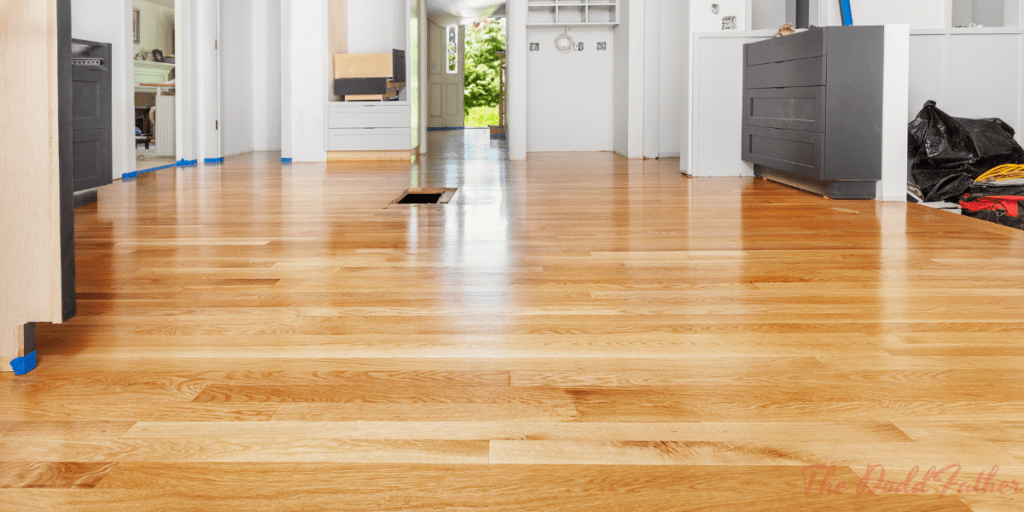
Who needs gym equipment when you have a smooth floor and some creativity? Sliding lat pulldowns show that you can have effective workouts with little gear.
Just take a pair of sliders. You can also use socks on a smooth floor or paper plates on a carpet. Start in a high plank position with the sliders under your feet. Keep your core tight and your body straight from head to heel. Slowly slide back, reaching your arms overhead.
This move targets your latissimus dorsi muscles, similar to the extension phase of a regular lat pulldown. You can make it easier or harder by changing how far you slide back. The main point is to keep it controlled and engage those lats the whole time.
8. Using a Pull-Up Bar for Modified Lat Pulldowns
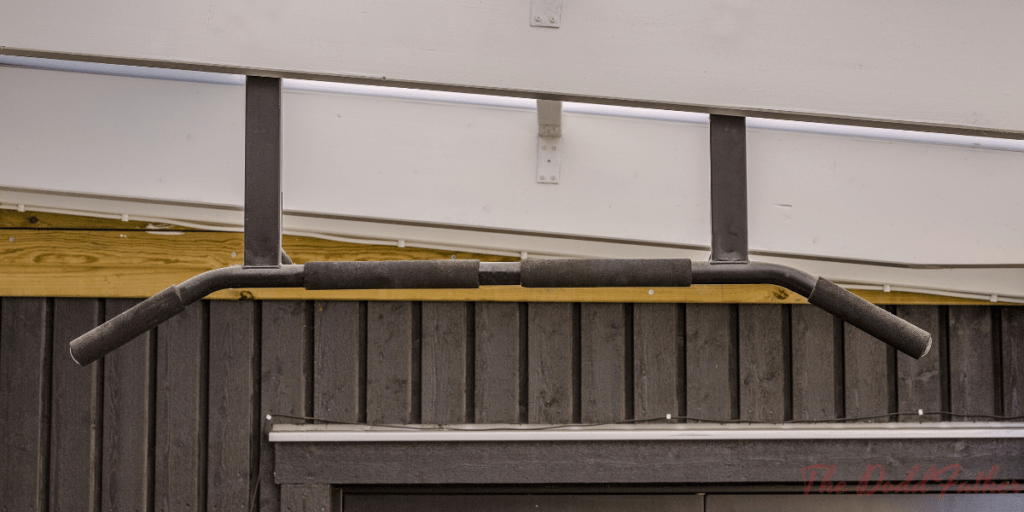
The reliable pull-up bar can do more than just regular pull-ups. If you change your position slightly, you can turn this classic piece of equipment into a great tool for lat pulldowns.
First, grab the pull-up bar with an overhand grip. Make sure your hands are a bit wider than your shoulders. Instead of pulling yourself up, focus on the lowering part of the move. Slowly lower yourself down from the bar. You’ll feel a good stretch in your lats.
This slow movement targets and strengthens the latissimus dorsi muscles well. You can try different speeds and pauses while lowering yourself to make it more challenging. This way, you can keep your lats working hard.
9. Broomstick and Bands for Pulldowns
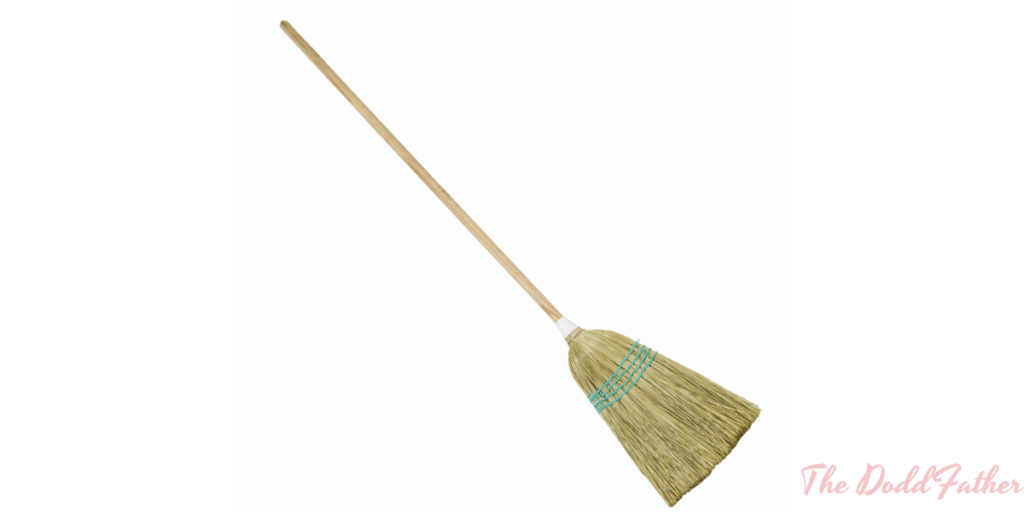
Don’t throw away that broomstick just yet – it can work well with a resistance band. Together, they make a strong tool for doing lat pulldowns. First, attach a resistance band to a high spot. Then, loop the other end around the broomstick.
Kneel down facing the broomstick. Hold it with an overhand grip, keeping your hands a bit wider than your shoulders. Be sure to engage your core and keep your back straight. Pull the broomstick down towards your chest. This move looks like a regular lat pulldown.
The resistance band makes it harder and helps your back muscles work with each rep. As you get stronger, you can either use a band with more resistance or change your position for a bigger challenge.
Enhancing Your Home Workout Setup
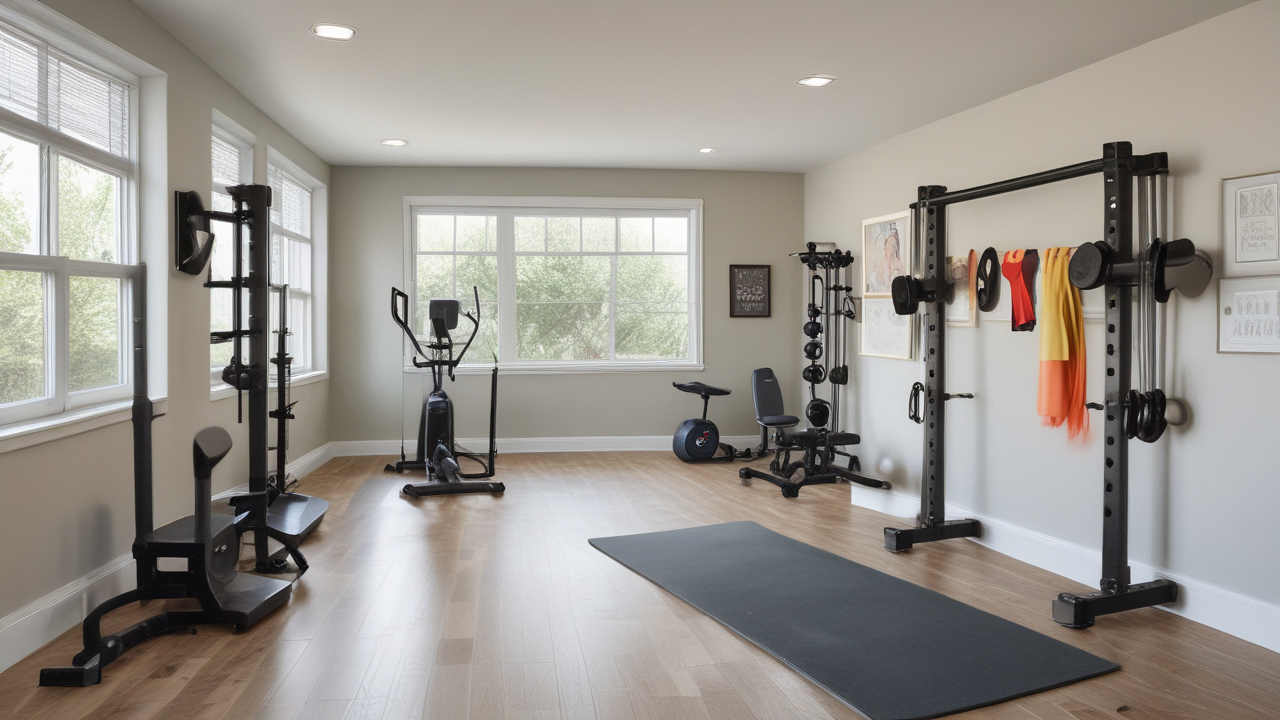
Upgrading your home lat pulldown at home workout is more than just adding new exercises. It’s about making your workout space better for you. By paying attention to a few key things, you can build an area that keeps you motivated, helps with good form, and improves your results.
Imagine it as your own fitness haven—a place where you feel strong enough to reach your back goals. Let’s look at some easy changes that can make your home gym even better.
Selecting the Right Resistance Bands
Resistance bands are great for your home gym. They are versatile, affordable, and effective for workouts. Choosing the right resistance level is important. It helps you make the most of your workouts and avoid injuries.
There are many types of resistance bands. They come in light, medium, and heavy options. This means you can find one that suits your fitness level. When you try a new exercise, start with a lighter band.
As you get stronger, increase the resistance slowly. This will challenge your muscles while keeping your form correct. It’s not about lifting the heaviest band. It’s about using your muscles the right way and feeling the burn. You can find resistance bands at online retailers or sporting goods stores. Look for ones with good descriptions and resistance levels. You might also find them at a lower price with free shipping. This makes them a great addition to your home gym.
Tips for Safe Equipment DIYs
DIY projects are a great way to improve your home gym without spending too much money. However, it’s important to always put safety first. If you are making your own gym equipment, following some simple precautions can help you avoid accidents and enjoy your workout.
Choose high-quality and strong materials that can handle your workouts well. Check all materials for any damage before you use them, and replace anything that is broken. For things like pulley systems and resistance band setups, make sure to check the anchoring points to see if they are stable and can hold the weight.
Also, do not hesitate to ask experienced people or look at trusted online resources for more safety tips. The main point is to keep safety in mind when making DIY gym equipment, so your workouts are safe and effective.
Maximizing Space in Small Areas
Limited space shouldn’t stop you from your fitness goals. You can turn any small area into a helpful workout space. By planning smart and picking the right equipment, you can do more than you think in a small spot.
Choose equipment that is useful and small. Resistance bands, dumbbells, and a pull-up bar are great choices. They don’t take up much room and offer many workout options. Also, think about portable gear that’s easy to put away when you’re done. This includes foldable yoga mats, compact weight benches, and suspension trainers that attach to doors.
Don’t forget to use your wall space. Wall-mounted storage for your equipment and resistance bands helps keep your space neat and clear. Take on the challenge of making the most of your area, and you’ll see that even a small place can turn into a strong home gym. This can help you reach your fitness goals.
Maintaining Proper Form at Home
While working out at home is very convenient, many people often struggle with their form without a trainer watching them. Good form is really important for getting the best results and preventing injuries.
It’s better to do fewer exercises well than to do many exercises with poor form. This means focusing on each repetition and using control while working the muscle groups you want to target. One great tip is to use mirrors in your workout area. This way, you can check your posture and movements as you exercise.
You can also record your workouts. Watching these videos can help you see what you need to improve and help you get better over time. Enjoy the path of progress, pay attention to your body, and keep focus on your form. This is the key to reaching your full workout potential and getting lasting results.
Complementary Exercises for a Balanced Back Workout
Achieving a great-looking back needs more than just focusing on your lats. You should use a balanced plan that includes exercises for all the muscle groups that support your back. This is like building a strong base. A strong base helps your back muscles work well together.
When you add exercises for your upper back, core, shoulders, and arms, you not only improve your appearance but also boost your posture, stability, and overall strength. Let’s look at some important exercises that can make your back workout better and help you get more from your lat pulldown.
Incorporating Upper Back Strengthening
A strong upper back is important for a balanced body and preventing injuries. By doing exercises that focus on your upper trapezius muscles, rhomboids, and rear delts, you build a strong base. This helps support your lat pulldowns and boosts your overall strength.
Face pulls are a great exercise to add. They target your rear delts and help make your shoulders healthier. Try adding band pull-aparts to your warm-up. This will wake up your upper back muscles and improve your posture.
Keep in mind, a strong and stable upper back not only makes your body look better but is also key in avoiding shoulder injuries. Add these exercises to your routine, focus on good form, and you will see a change in your upper back.
Core Exercises for Stability and Support
A strong core is key for a powerful and safe workout routine. It’s about more than just getting six-pack abs. A good core helps support your spine, improves balance, and boosts your overall athletic skills.
Planks are great for building core strength. Start by holding a plank for 30 seconds. As you get better, try to hold it for longer. Russian twists are also good. You can use a medicine ball or a weight plate to work your side abs. These muscles are vital for twisting movements. Don’t forget that core exercises should be part of your warm-up. They help get your body ready for harder workouts.
Shoulder Mobility Routines
Limited shoulder movement can hold you back and raise the chance of injuries. Adding shoulder mobility exercises to your warm-up gets your shoulder joints ready for lat pulldowns and other back exercises.
Arm circles, moving forward and backward, are a simple and helpful way to warm up your shoulder joint. Using a broomstick or a light resistance band for shoulder dislocations helps improve the flexibility and range of motion in your shoulder joint.
Focus on slow and steady movements. Gradually increase the range of motion as your muscles loosen up. Also, adding stretches for your chest and upper back after your workout can further improve shoulder mobility and help with recovery.
Arm Strengthening to Support Lat Development
Training your lats well means also working your arm muscles. When you make your biceps, triceps, and forearms stronger, you help improve your lat pulldown.
You can do bicep curls with dumbbells or resistance bands. This targets the muscles in the front of your arms. Tricep pushdowns using a resistance band or a cable machine will help strengthen the back of your arms. This action makes pushing movements better.
It’s important to train all these muscles together. Doing this gives you better overall strength and helps prevent muscle imbalances. Add these arm-strengthening exercises to your workouts, and you will see a big difference in your lat development.
Conclusion
Incorporating different lat pulldown at home exercises can make your workout routine more fun and effective. You can use simple things from around your house to work on your lats and build a strong back. You don’t need fancy gym gear for this. These new techniques can also improve your overall fitness.
To have a great home workout, choose the right resistance bands, set up your equipment safely, and keep good form. Consistency and proper technique are important for reaching your fitness goals. Use these creative lat pulldown methods to boost your home workouts and enjoy a stronger, healthier back!
Frequently Asked Questions
What Can I Use Instead of a Lat Pulldown Machine?
You can have a great lat workout by using resistance bands, free weights, towel rows, or a pulley system you make yourself. Be creative and use what you have around you!
How Often Should I Do Lat Pulldowns at Home?
Listen to your body. Make sure you give your muscles enough time to recover between workouts. Aim to train 2-3 times a week for the best results. If you’re a beginner, start with 1 time a week and adjust from there.
Can Lat Pulldowns Improve Posture?
Yes, lat pulldowns make the back muscles stronger, which helps keep a good posture. When you strengthen your back and core, it can help with shoulder alignment and core stability.
Are DIY Lat Pulldown Setups Safe?
When you select DIY setups for your home gym, focus on strong build quality. Use good materials and make sure to have secure anchoring. This will help keep you safe while you work out.






